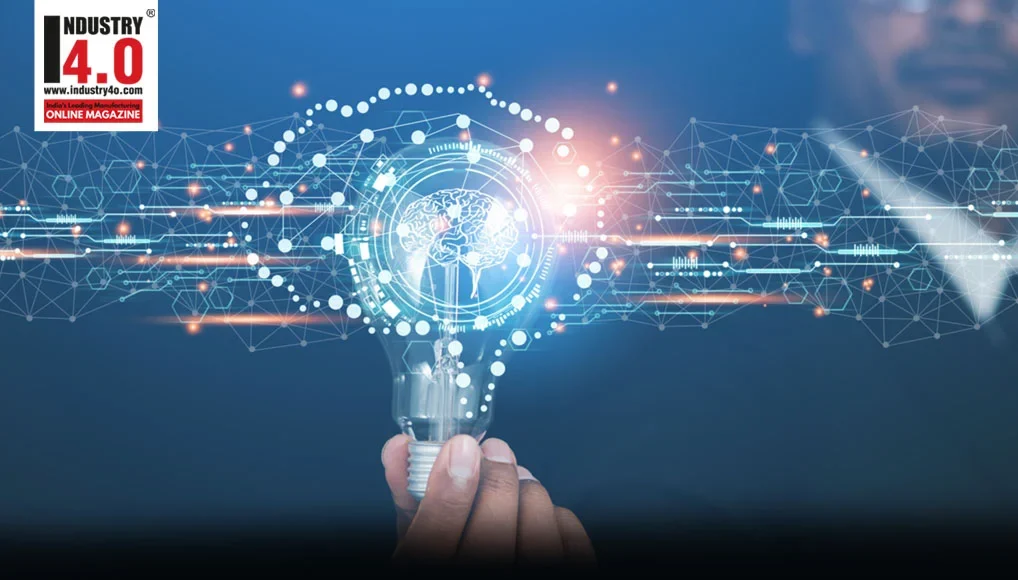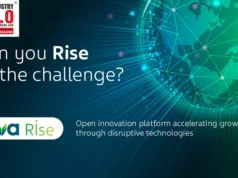Shortly after the Fourth Industrial Revolution became a global trend, a new term started floating around the corporate and institutional communication channels. The introduction of Industry 5.0 by Frost & Sullivan’s Aroop Zutchi in 2019, was followed by the term’s adoption by the European Union. Over the last 3 years, the European Commission has included it in every transitional guideline about the future of industries and societies.
However, is this a new industrial revolution? For those following the global applicability of digital transformation and have been witnessing the slow transition from Industry 3.0 to Industry 4.0 in most of the countries, this would seem absurd and immature. What’s the hype all about, then?
 Industry 5.0, Society 5.0, Energy 5.0 : what’s behind a definition?
Industry 5.0, Society 5.0, Energy 5.0 : what’s behind a definition?
According to the official EC definition“Industry 5.0 provides a vision of industry that aims beyond efficiency and productivity as the sole goals, and reinforces the role and the contribution of industry to society… It complements the existing “Industry 4.0” approach by specifically putting research and innovation at the service of the transition to a sustainable, human-centric and resilient European industry.”
A few years earlier, Japan publicly talked about the vision for Society 5.0, “a human-centred society that balances economic advancement with the resolution of social problems by a system that highly integrates cyberspace and physical space.” In the below figure we can see a depiction of this vision and how it facilitates the society’s “3E+S” key factors:
- Energy security (degree of self-sufficiency)
- Economic efficiency (cost of electrical power)
- Environment (greenhouse gas emissions)
- Safety

As expressed above, energy is expected to play a key role in the aspiring future of human societies. And to distinguish it from Industry 4.0’s endeavour for cheaper energy and higher productivity, we would go on with giving the below description:
Energy 5.0 includes all those digital transformation advancements and mental shifts around the Energy sector, which enable the realization of a more human-centric, energy efficient and sustainable future for the human societies.
Where is energy consumed?
In the below IEA’s graph (International Energy Agency) shared by McKinsey, we can observe how energy has been consumed by various industries over almost three decades.
- Power generation
- Transportation
- Buildings
- Industry
- Agriculture

To understand how digital transformation developments can help realize Energy 5.0 vision in a practical way, we’ll have to take a closer look to each one of those sectors, starting from the less energy-consuming ones.
Energy 5.0 in the Agricultural sector
The developments in agriculture revolve around the water-energy-food nexus. Any changes to one of those factors, will affect the others. To assist in the fulfilment of Society 5.0 values, the equilibrium should always be in favour of high-quality food, while utilizing fewer resources (water, energy) and keeping emissions as low as possible.

Whether the application field is a greenhouse or large-scale farming, digital transformation technologies can help with smarter water management and precision farming.
IoT sensors for moisture, temperature and actual weather conditions may provide critical information, so that AI-powered, cloud-based platforms will generate suggestions for more rewarding and cost-effective irrigation patterns.Drones could possibly add to the analytics by air-scanning the plants for deficiencies and spot-watering when needed. Having complete visibility of the status of growing seeds and plants, farmers will consume more water or heating energy only when it’s necessary.
To add to the low-energy profile, smart water management systems should be consisted of high-efficiency components (motors, pumps and variable speed drives) and be powered by local renewable energy sources, such as wind farms and solar parks.
Energy 5.0 in the Industrial sector
The industrial sector is a more difficult application field for Energy 5.0, as it’s positive result for the society and the environment is not depended so much on technological break throughs, but more on the development and use of alternative energy sources to fossil fuels.
Hydrogen is a valid solution, as it can provide substantial energy when burnt, leaving behind only water. However, we cannot find it free in nature.

In the Energy 5.0 context, the only acceptable production method is the one from 100% renewable resources. However, producing “green hydrogen” comes with a high cost (appr.£8.31/kg), which makes its extensive use non-viable.
Alternative options to power the industry would include nuclear and fusion energy, but there are always concerns regarding safety. Digital transformation technologies with the use of ultra-sensitive sensors and AI-predictive analytics can take away some of them, but it would be difficult to decide such a deployment at scale. Moreover, having everything digitally controlled and connected to the grid, enhances the risk of a cyber attack.
Energy 5.0 in the Buildings sector
Buildings, especially commercial ones, have traditionally been a huge consumer of electrical energy.Asa European Commission 2020 report on Energy Efficiency in Buildings confirmed, they are responsible for about 40% of the total EU energy consumption and36% of the total EU greenhouse gas emissions. Hence, any improvement in building’s energy management, could significantly affect the overall energy consumption of a residential area.
Industry 4.0 technological developments facilitated the digitalization of building and energy management systems. IoT sensors can now monitor energy consumption, lighting, temperature and transmit real-time data to the central control (usually cloud-based) platform for analysis and automatic decision-making. Therefore, applications like heating, cooling, lighting, water distribution are handled with much higher efficiency. In some cases, edge analytics can shorten the time required for corrective actions, plus save energy from data storage and transfer to and from the cloud.

What really matters for Energy 5.0 though, is another dimension of the digital transformation in the buildings sector.These smart facility management platforms can be used for the improvement of the indoor air quality, keep track of safe distancing, monitor sound levels and predict health or safety threats.Therefore,building operations don’t only become more energy efficient, but they can also improve the life of the inhabitants or workers and protect public health.
This is highly regarded in the Society 5.0 context, but also in the ESG framework (Environmental, Social, Governance). Introduced by a World Economic Forum multi-corporate alliance, ESG reporting and profiling is expected be a determining factor of how businesses will be funded from now on.
Energy 5.0 in the Transportation sector
The human societies have already started moving towards an electrically powered transportation. Others by leading, the rest by following, it appears that this will be the norm for both private and public transportation.
Electric railways have been used for years and there are fairly mature technologies for reliable and cost-effective power transmission. With the other means of transportation though, things are not that simple.

As far it concerns Electrical Vehicles (EV), although most of the car manufacturers released battery-powered cars, vans and buses, there is lots of investment pending to provide reliable networks with adequate recharging capacity. Until this happens, EV transportation cannot be implemented at large.
Another great concern is how power availability can be guaranteed at all times. Therefore, advanced energy storage technologies will play an important role, as well as the creation of reliable energy coupling between different power supply systems.
Finally, regarding to shipping and aviation, it seems very difficult to imagine them being fully powered by electrical energy, as very big energy storage systems aren’t easy to handle on-board. Green hydrogen is expected to help making these means of transportation more environmental-friendly, but – as we explained above – producing hydrogen solely by renewable resources at acceptable costs is very far from being achieved.
What we also need to point out, is that to implement Energy 5.0 in the transportation sector, where humans and merchandise will be moved around reliably and with safety, consuming less energy, primarily provided by renewable sources, the digital transformation of the grid should reach new levels of capabilities.
Energy 5.0 in the Power Generation & Distribution sectors
Transitioning to“greener” societies requires drastic changes on how power is generated and distributed.Governments would need to invest heavily in renewable sources (wind farms, photovoltaic parks, mass geothermal heating systems, hydro-electric power stations), to decrease their depend encyon carbon-emitting fuels. At the same time, innovation in battery systems will allow big volumes of excessive energy to be stored,especially when the weather conditions permit the renewable power generation systems to produce more energy than requested to cover the immediate consumption demand. Unless these two transformations progress together, people will feel insecure about trusting their safety and well-being in “green” power sources. And ultimately, the ambitious Net-Zero 2050 goal will remain a far-fetched dream.

What’s even more critical to a smooth power supply transition is the seamless cooperation of local and central power generating sources in a hybrid system. The digitally transformed grid control systems should be able to constantly monitor key operational data, analyse them in real-time using AI-predictive algorithms, identify potential risks of failure and instantly decide which is the best allocation of energy resources.
By implementing the above, the smart inter network coupling will reliably exchange power between different grid entities – from are as with abundant energy, to those of higher demand– and guarantee adequate power supply to every location.
It goes without saying, that the smart grid needs to prioritize the consumption of energy supplied by renewable sources, then the one from lower-CO2 emitting sources (i.e.hydrogen and natural gas power plants)and finally from the heavy-CO2 emitting ones (i.e. coal power plants). By progressively incorporating more zero and low-carbon power generation sources, the electrical supply network will remain reliable and cost-effective, making this a sustainable and permanent transition.
The path to a more human-centric society with low environmental impact goes through the development and application of digital transformation technologies. The mental shift required, however, is equally important. Following the Energy 5.0 initiative is a practical way of taking advantage of the possibilities offered by advanced technologies for the transition to more empowered human societies and the preservation of our planet.
About the Author :

Mr. Haris Tsotsos is an Industry 4.0 – 5.0 engineer, with over 20 years of international sales experience, who now provides digital business development services for companies in the digital transformation technologies field.
He holds an MEng in Electrical & Computer Engineering and an MSc in Data Communication Systems.
For over two decades, he has been selling advanced technical solutions for multinational tech organizations. During his last 12-year employment by ABB’s Motion & Robotics division as a senior sales engineer, he was involved in the design and delivery of Energy Efficiency, Industry 4.0 and IoT projects in the Industrial, Energy and Water management sectors. He also had the opportunity to present motions systems, energy efficiency and IIOT solutions in live training sessions and webinars.
Since July 2020, he is a freelancer and helps companies in the Industry 4.0, IoT, SaaS and Automation markets to showcase their expertise and built a robust client pipeline, by delivering result-driven copy writing, web content, case studies and digital business development services.
He can be contacted at:
E-mail: haris@spark2action.com
LinkedIn: www.linkedin.com/in/haristsotsos
Website: www.spark2action.com










